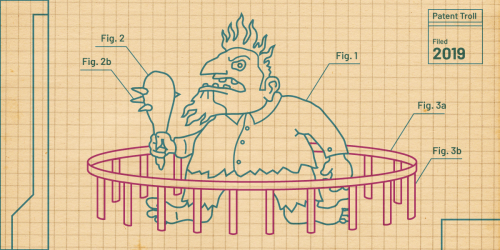Earlier this year, we announced that along with the Cyberlaw Clinic at Harvard’s Berkman Center for Internet and Society, we were challenging six patent applications that, if granted, could threaten the development of 3D printing technology. We asked you—the community—for help, and your input was invaluable. We're still waiting to hear from the Patent Office on those applications, but our work is not done. We need your help again, this time to challenge dangerous patent applications that threaten mesh networking technology.
Mesh networking allows users to form their own networks without a centralized infrastructure, making them inherently resistant to censorship, surveillance, and disruption. Given recent revelations showing widespread surveillance of the phone calls and online activities of innocent Americans and others around the globe, the development of mesh networks more important than ever. Governments and commercial actors have taken advantage of intermediaries as “weak links” in order to censor, surveil, and disrupt communications and social movements. Already in the United States, cell towers have been deactivated in response to planned protest, while activists in countries such as Egypt, Libya, and Syria have suffered massive blackouts that shut down all access from within the country to the wider Internet. Mesh networking technology can help activists fight back.
Wireless Mesh Networks
For more than a decade the open-source community has been developing networks that use multi-hop connectivity to bypass the current ISP-dominated model of Internet access. These Wireless Mesh Networks (WMNs) have tremendous potential for enabling the free flow of information without exposure to censorship and monitoring. Because they lack a central access point, mesh networks are also harder to take down, as the removal of one node won’t terminate the entire network. And WMNs, by not relying on infrastructure provided by ISPs, can provide connectivity in areas where that infrastructure is inaccessible, damaged, or prohibitively expensive.
The open source community has developed innovative tools and applications of mesh networking technology including the B.A.T.M.A.N. routing protocol developed by Freifunk, a system for internet access in remote areas of Afghanistan and Kenya (FabFi), and community controlled telephone systems in Nigeria, Columbia, Puerto Rico, South Africa, East Timor, and Brazil (VillageTelco). Harvard Law Professor Jonathan Zittrain and former FCC chairman Julius Genachowski recently advocated for the use of mesh networks to provide phone access during times of crisis when mobile networks are overloaded.
The Problem
Wireless Mesh Networking is still in its nascent stages, and the innovations and experimentation of the open source community are playing a vital role in advancing the technology. However, there has also been significant proprietary and military interest in the technology, and companies are seeking patents in many areas of WMN already explored by the open source community. We unfortunately know what can happen when overbroad patents get granted—the rise of patent trolls, lawsuits that can threaten growing businesses, and threats that target entire areas of technology. We don't want to see that happen to mesh networking.
This is where you come in!
We have identified several patent applications that we believe particularly threaten the free development of mesh networking technology. There is a danger that these patents, if granted, will lock up the basic mesh network infrastructure and restrict advancement of and access to the technology.
We have been using the Patent Office’s new Preissuance Submissions procedure, which gives third parties an opportunity to tell patent examiners when they think a patent application shouldn't be granted. The procedure requires those third parties to submit publications predating the application that prove the ideas in the patent were not novel.
Which is why we need your help. We are again partnering with Ask Patents so you can help us identify the best prior art to rein in these applications. While prior art for issued patents must date back many years, these are recently filed applications for which relatively recent publications may be helpful. Look at each “Request for Prior Art” we post to learn the exact priority date.
Working together we can protect the mesh networking community from overbroad, illegitimate patents that threaten to stifle innovation and access to technologies that preserve personal freedoms.
APPARATUS AND METHOD FOR ENHANCING WIRELESS MESH NETWORK COMMUNICATIONS
ADAPTING EXTENSIBLE AUTHENTICATION PROTOCOL FOR LAYER 3 MESH NETWORKS







